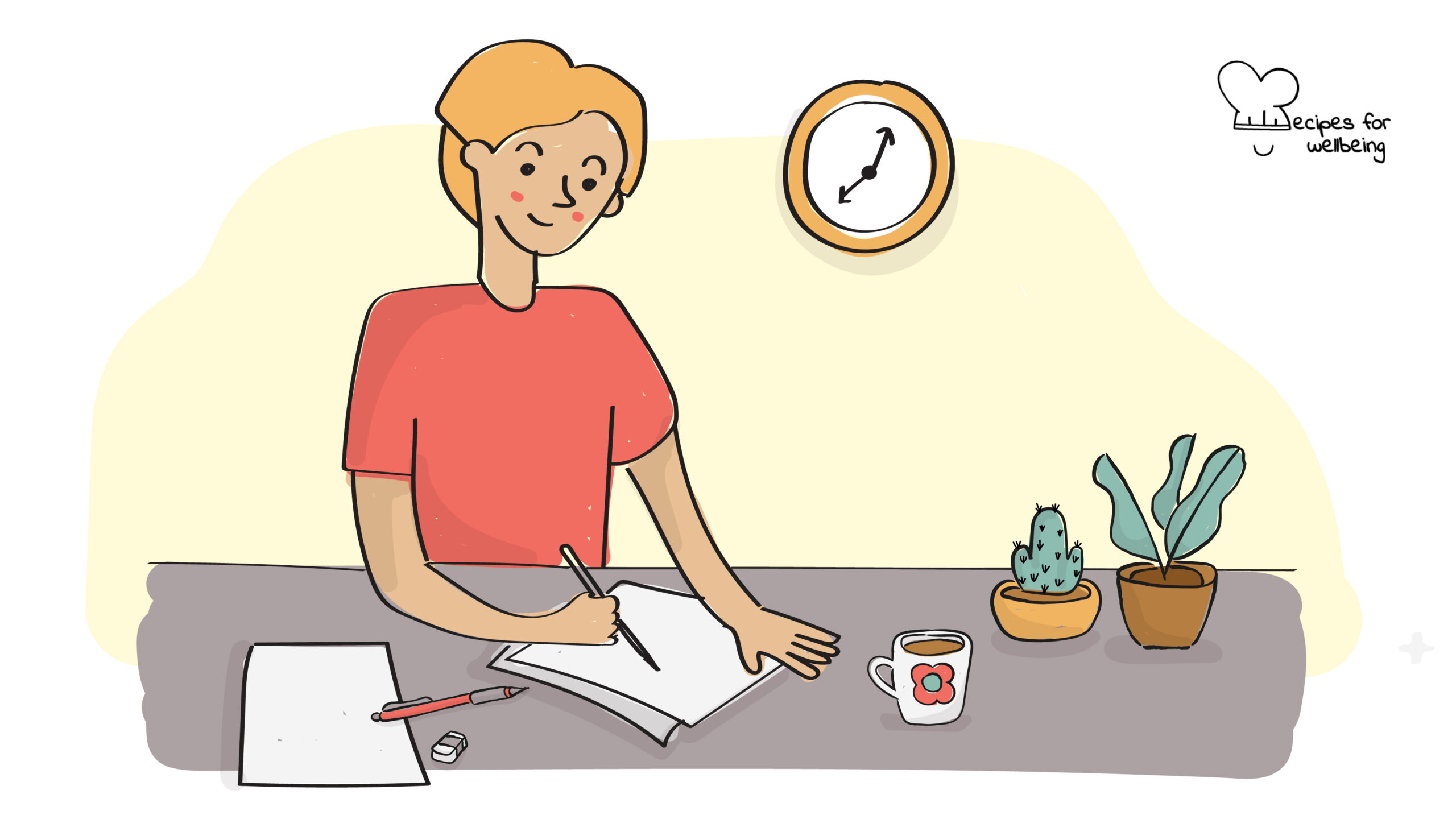
Individual reflection
Insights gained through critical self-awareness are emancipatory in the sense that at least one can recognise the correct reasons for his or her problems. ―Jack Mezirow
👥 Serves: Up to 50 people
🎚 Difficulty: Medium
⏳ Total time: 1 hour
🥣 Ingredients: Notebooks (1 per participant, or a sheet of paper), pens (1 per participant)
💪 Nutritional values: Reflection, Self-assessment, Self-growth, Kindness, Appreciation

Individual reflection
📝 Description
A reflection practice leading to action.
Reflection is an essential component of learning, which can then ignite change in behaviour. The following activity has been taken from Hyper Island Toolbox, whereby “individual reflection helps to pick apart complex experiences, so that the successes of the experience can be repeated or improved, and the failures provide learning opportunities for growth.” What is key here is that reflection alone does not spark change – it must be an intentional process which leads you to take concrete action. The format of this individual practice is flexible and can be adapted to different group sizes, whereby participants are paired up or placed in small groups for the final sharing and commitment to action.
Inspired by: The Reflective Practitioner, Donald A. Schön, 1983. Learning by Doing: A Guide to Teaching and Learning Methods, Graham Gibbs, 2001
👣 Steps
Step 1 – Creating the space (5’)
This is an individual exercise. You are facilitating your own reflective process. First, create the right physical and mental state for reflection. Finish any pressing tasks. Send any important emails. If possible, go somewhere quiet.
Step 2 – Checking in (5’)
Check-in with yourself: How do I feel? How was the day? What’s on my mind? Take a few moments to become present in the moment. Decide what experience your reflection will focus on (e.g. an experience that has recently taken place, a social interaction, a recent event, etc.).
Step 3 – Reflecting and writing (30’)
You may wish to write down reflections with a pen and paper, free from the distractions of computers, phones, or tablets. You may want to set timings for each of the following questions, if time is of any concern:
- What happened during the experience?
- How did I feel and what were my reactions?
- What insights or conclusions can I draw from the experience? What did I learn?
- How can I apply what I learned to improve future experience? What actions can I take based on what I learned?
Step 4 – Taking action (20’)
If relevant, set deadlines for each of the actions you have identified during your reflections and share them with a colleague. Your colleague can support you by holding you accountable to complete them.

